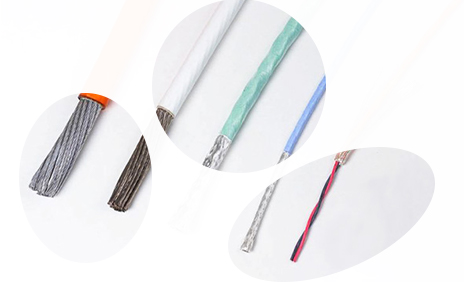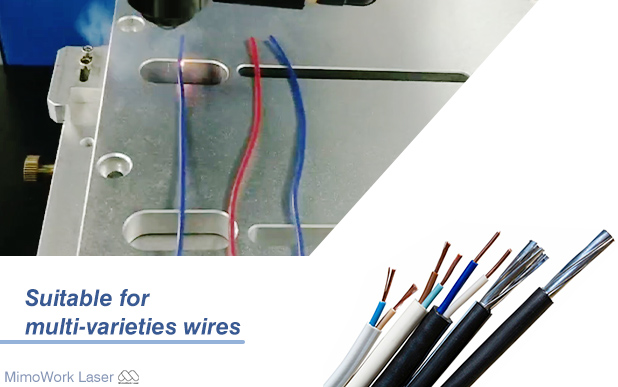China Wholesale Laser Cut Film Quotes Pricelist - Laser Wire Stripper – MimoWork Laser
China Wholesale Laser Cut Film Quotes Pricelist - Laser Wire Stripper – MimoWork Laser Detail:
Mechnical Support for your productivity
◼ Small Size
The desktop model with compact and small size.
◼ Automation Working Flow
One-key operation with automatic computer-controll system, saving time and labor.
◼ High-Speed Stripping
Stripping wire simultaneously by up and down dual laser heads brings high efficiency and convenience for stripping.
Technical Data
| Working Area (W * L) | 200mm * 50mm |
| Laser Power | US Synrad 30W RF Metal Laser Tube |
| Cutting Speed | 0-6000mm/s |
| Positioning Precision | within 0.02mm |
| Repeat Precision | within 0.02mm |
| Dimension | 600 * 900 * 700mm |
| Cooling Method | air cooling |
Why choose laser to strip wires?
Principle of laser stripping

During the laser wire stripping process, the energy of radiation emitted by the laser is absorbed strongly by the insulating material. As the laser penetrates the insulation, it vaporizes the material through to the conductor. However, the conductor strongly reflects the radiation at the CO2 laser wavelength and is therefore unaffected by the laser beam. Because the metallic conductor is essentially a mirror at the wavelength of the laser, the process is effective “self-terminating”, that is the laser vaporizes all of the insulating material down to the conductor and then stops, so no process control is required to prevent damage to the conductor.
Advantages from laser stripping
✔ Clean and thorough stripping for insulation
✔ No damage to the core conductor
Comparatively, conventional wire-stripping methods make physical contact with the conductor, which can damage the wire and slow down processing speed.
✔ High repetition – steady quality

Video Glance of laser stripping
Suitable materials
Fluoropolymers (PTFE, ETFE, PFA), PTFE /Teflon®, Silicone, PVC, Kapton®, Mylar®, Kynar®, Fiberglass, ML, Nylon, Polyurethane, Formvar®, Polyester, Polyesterimide, Epoxy, Enameled coatings, DVDF, ETFE /Tefzel®, Milene, Polyethylene, Polyimide, PVDF and other hard, soft or high-temperature material…
Fields of Application

Common applications
(medical electronics, aerospace, consumer electronics and automotive)
We’ve designed laser systems for dozens of clients
Add yourself to the list!
Product detail pictures:


Related Product Guide:
No matter new consumer or outdated shopper, We believe in lengthy expression and trusted relationship for China Wholesale Laser Cut Film Quotes Pricelist - Laser Wire Stripper – MimoWork Laser , The product will supply to all over the world, such as: Nigeria , United States , Italy , Company name, is always regarding quality as company' s foundation, seeking for development via high degree of credibility , abiding by ISO quality management standard strictly, creating top-ranking company by spirit of progress-marking honesty and optimism.
In general, we are satisfied with all aspects, cheap, high-quality, fast delivery and good procuct style, we will have follow-up cooperation!






